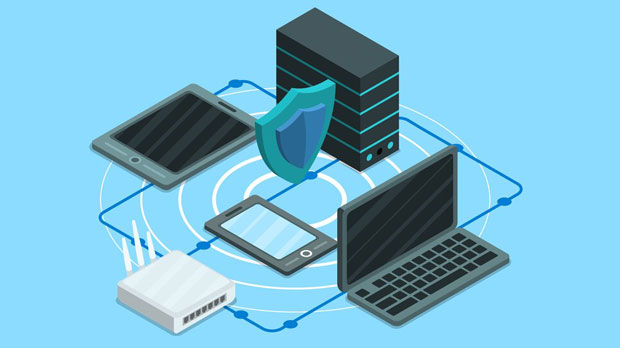In the modern world of web scraping, automated systems, and online data collection, managing IP rotation has become a crucial challenge. With the increasing number of IP blocks and CAPTCHAs designed to prevent bots from accessing websites, tools like PYPROXY API have become essential for overcoming these barriers. The PyProxy API enables automatic IP rotation, ensuring continuous access without being blocked. This article explores the technical implementation of IP rotation in PyProxy API mode, delving into its architecture, benefits, and challenges while highlighting its practical significance for clients seeking to maintain seamless data access. Introduction to PyProxy API and the Importance of IP RotationIn today's digital age, automated bots and crawlers are widely used for tasks such as web scraping, data mining, and even competitive analysis. However, one of the major obstacles in such activities is the risk of IP bans. Websites often detect suspicious activities, such as high-frequency requests or patterns that match known bots, and respond by blocking or limiting access. This makes IP rotation essential to bypass these restrictions.PyProxy API is a powerful tool that addresses this issue by automatically rotating IPs for each request. This allows clients to maintain anonymous and uninterrupted access to websites by switching between different proxy servers. By implementing IP rotation, PyProxy API ensures that bots or crawlers remain undetected, preventing them from being flagged or blocked by target websites.How PyProxy API Implements Automatic IP RotationPyProxy API’s automatic IP rotation works on a relatively simple but effective architecture. The key components that facilitate this process include proxy servers, a rotation mechanism, and the backend infrastructure that coordinates the use of different proxies.1. Proxy Servers: The first component of IP rotation is the pool of proxy servers. These servers are sourced from a variety of locations worldwide, allowing for global anonymity. Each proxy server acts as an intermediary, masking the original IP address of the client and forwarding requests to the target website.2. Rotation Mechanism: The core of PyProxy API’s functionality lies in the rotation mechanism. It ensures that each request sent through the API uses a different IP address. Rotation can be configured in different ways, such as: - Round-robin rotation: This is the most common method, where the system rotates through the list of available proxies in a sequential manner. Once the list of proxies is exhausted, the system starts over. - Random rotation: In this method, a random IP is selected from the proxy pool for each request, ensuring unpredictable and non-repetitive IP addresses, which increases anonymity. - Geo-targeted rotation: This option allows the client to rotate IPs based on geographic locations, ensuring that requests appear to originate from specific regions, which is particularly useful for location-based scraping or accessing geo-restricted content.3. Backend Infrastructure: The backend infrastructure is responsible for managing the proxy pool, maintaining high availability, and ensuring that proxies are functioning correctly. It monitors the performance of each proxy in the pool, checking for any downtime or IP blocks, and replacing problematic proxies with fresh ones. This helps maintain continuous service without interruption.Advantages of Automatic IP Rotation in PyProxy APIThe automatic IP rotation feature in PyProxy API offers several key benefits for clients and businesses:1. Bypassing IP Blocks: One of the primary advantages of IP rotation is its ability to bypass IP blocks. Websites use various techniques, including rate limiting and CAPTCHA challenges, to prevent scraping and bot activities. By rotating IP addresses with each request, PyProxy API ensures that a bot’s activity appears to come from different users, significantly reducing the likelihood of detection.2. Improved Anonymity: Rotating IPs provides a higher level of anonymity for web scrapers, bots, and crawlers. Since the IP address constantly changes, it becomes nearly impossible for websites to track the activity back to a specific source, enhancing privacy and security.3. High Availability and Reliability: With a pool of proxies and the ability to dynamically replace failed proxies, PyProxy API ensures high availability. Even if one proxy server is blocked or down, the system can automatically switch to another, ensuring that requests continue to be processed without interruptions.4. Geo-Targeted Scraping: Many businesses and data professionals require data from specific regions. With geo-targeted IP rotation, PyProxy API enables users to target specific countries or cities, allowing them to gather local data, circumvent regional restrictions, and perform tasks like price comparison, sentiment analysis, and more.5. Cost Efficiency: By using a rotating IP system, clients reduce the need for managing large sets of static proxies. This lowers operational costs as clients can rely on a dynamic, automated system that adjusts based on usage and performance.Challenges in Implementing IP RotationWhile PyProxy API offers a powerful solution for IP rotation, there are still certain challenges involved in its implementation:1. Proxy Pool Management: Maintaining a large, diverse, and high-quality proxy pool can be challenging. A low-quality proxy pool may result in slower speeds, connection issues, or IPs that are already blacklisted. It is important to regularly monitor and update the proxy pool to ensure the best possible performance.2. CAPTCHA and Security Challenges: While rotating IP addresses can help bypass basic IP blocks, more advanced security mechanisms, such as CAPTCHA challenges, can still pose a problem. Some websites may require further steps to verify the user as human, which could require additional automation tools, such as CAPTCHA solvers.3. Latency and Speed: Rotating IP addresses, especially when using geographically dispersed proxies, can sometimes lead to higher latency. The time it takes for requests to route through different proxies may result in slower response times, which could affect the efficiency of web scraping tasks that require high-speed operations.4. Legal and Ethical Considerations: Automated IP rotation can sometimes be seen as an aggressive tactic, especially if it is used to bypass security measures put in place by websites. Companies and individuals using IP rotation need to ensure they comply with legal and ethical guidelines, avoiding misuse of automated tools and respecting the privacy and terms of service of target websites.Practical Applications of PyProxy API for ClientsFor clients, PyProxy API's automatic IP rotation offers valuable applications across various industries:1. Web Scraping and Data Collection: Businesses engaged in web scraping use PyProxy API to collect data from competitor websites, news sources, and e-commerce platforms without being blocked or restricted.2. Market Research and Analytics: Companies seeking insights into market trends, sentiment analysis, or price comparison often need to gather data from multiple websites. PyProxy API helps them do so efficiently by avoiding IP bans.3. SEO Monitoring: Search Engine Optimization (SEO) agencies rely on web crawlers to monitor rankings and search results for various keywords. IP rotation ensures that their tools can check results from multiple locations without being blocked by search engines.4. Ad Verification: Digital advertisers use IP rotation to verify that their ads are being displayed correctly across different regions and platforms. This helps them ensure that their advertising campaigns are running as intended.Conclusion: Why Choose PyProxy API for Automatic IP Rotation?PyProxy API offers a robust solution for automatic IP rotation, ensuring uninterrupted access to websites for scraping, data collection, and other automated tasks. With its versatile rotation mechanisms, high reliability, and strong anonymity features, PyProxy API helps clients overcome the challenges posed by IP bans and ensures seamless online operations.
Nov 12, 2025



































































